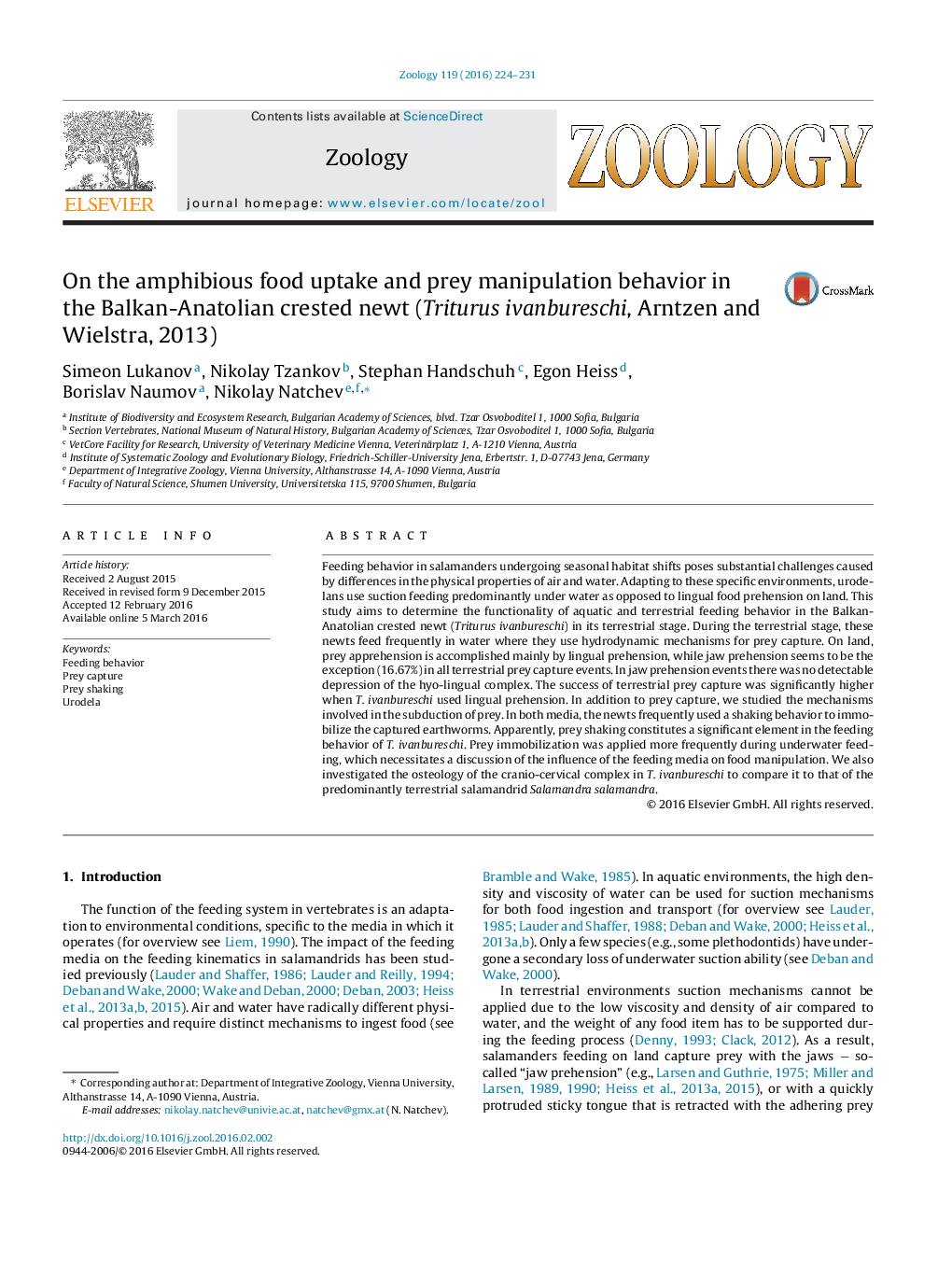| کد مقاله | کد نشریه | سال انتشار | مقاله انگلیسی | نسخه تمام متن |
|---|---|---|---|---|
| 2790967 | 1404425 | 2016 | 8 صفحه PDF | دانلود رایگان |

• The Balkan-Anatolian crested newt (Triturus ivanbureschi) is able to feed underwater during the terrestrial stage.
• On land, the newts take up food mainly by using tongue prehension.
• The hyoid complex remains static during jaw-based terrestrial food uptake.
• Prey shaking is an important element of the feeding behavior in T. ivanbureschi and is performed during both terrestrial and underwater feeding.
Feeding behavior in salamanders undergoing seasonal habitat shifts poses substantial challenges caused by differences in the physical properties of air and water. Adapting to these specific environments, urodelans use suction feeding predominantly under water as opposed to lingual food prehension on land. This study aims to determine the functionality of aquatic and terrestrial feeding behavior in the Balkan-Anatolian crested newt (Triturus ivanbureschi) in its terrestrial stage. During the terrestrial stage, these newts feed frequently in water where they use hydrodynamic mechanisms for prey capture. On land, prey apprehension is accomplished mainly by lingual prehension, while jaw prehension seems to be the exception (16.67%) in all terrestrial prey capture events. In jaw prehension events there was no detectable depression of the hyo-lingual complex. The success of terrestrial prey capture was significantly higher when T. ivanbureschi used lingual prehension. In addition to prey capture, we studied the mechanisms involved in the subduction of prey. In both media, the newts frequently used a shaking behavior to immobilize the captured earthworms. Apparently, prey shaking constitutes a significant element in the feeding behavior of T. ivanbureschi. Prey immobilization was applied more frequently during underwater feeding, which necessitates a discussion of the influence of the feeding media on food manipulation. We also investigated the osteology of the cranio-cervical complex in T. ivanbureschi to compare it to that of the predominantly terrestrial salamandrid Salamandra salamandra.
Journal: Zoology - Volume 119, Issue 3, June 2016, Pages 224–231